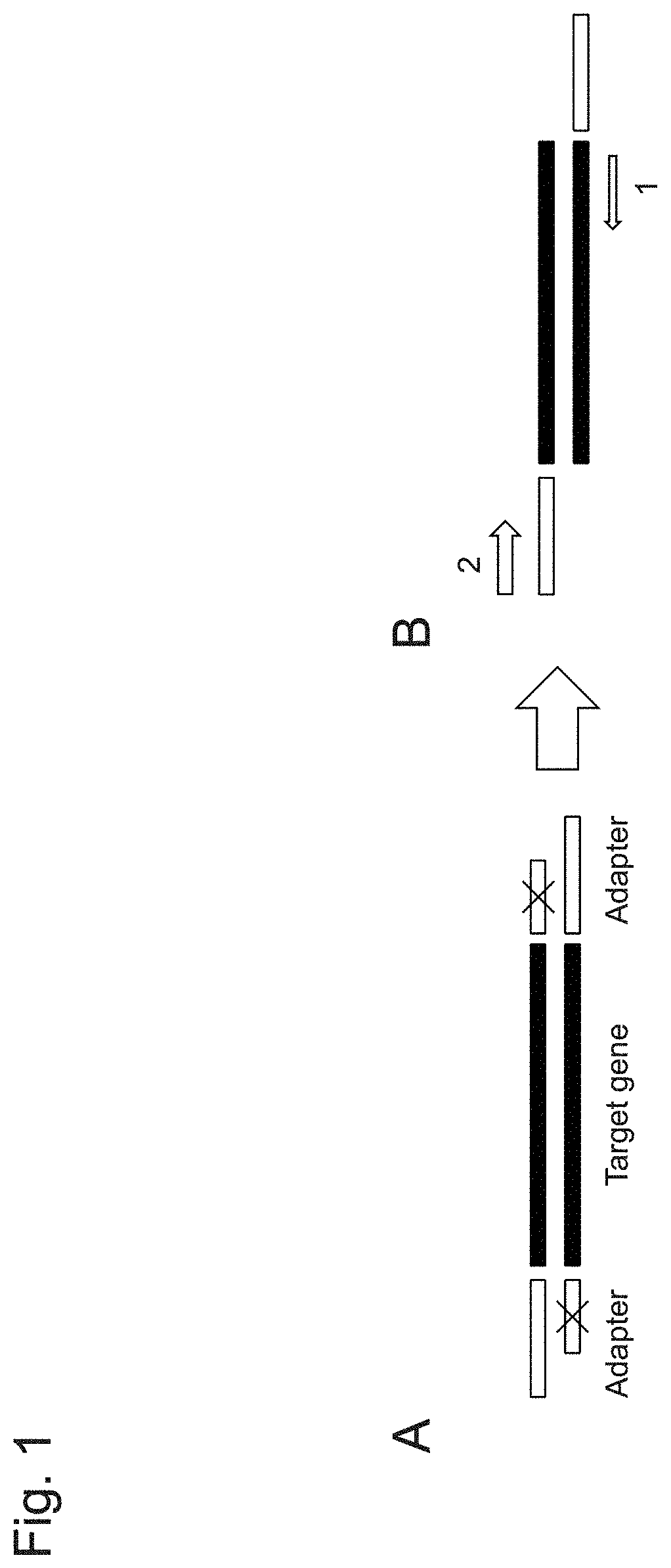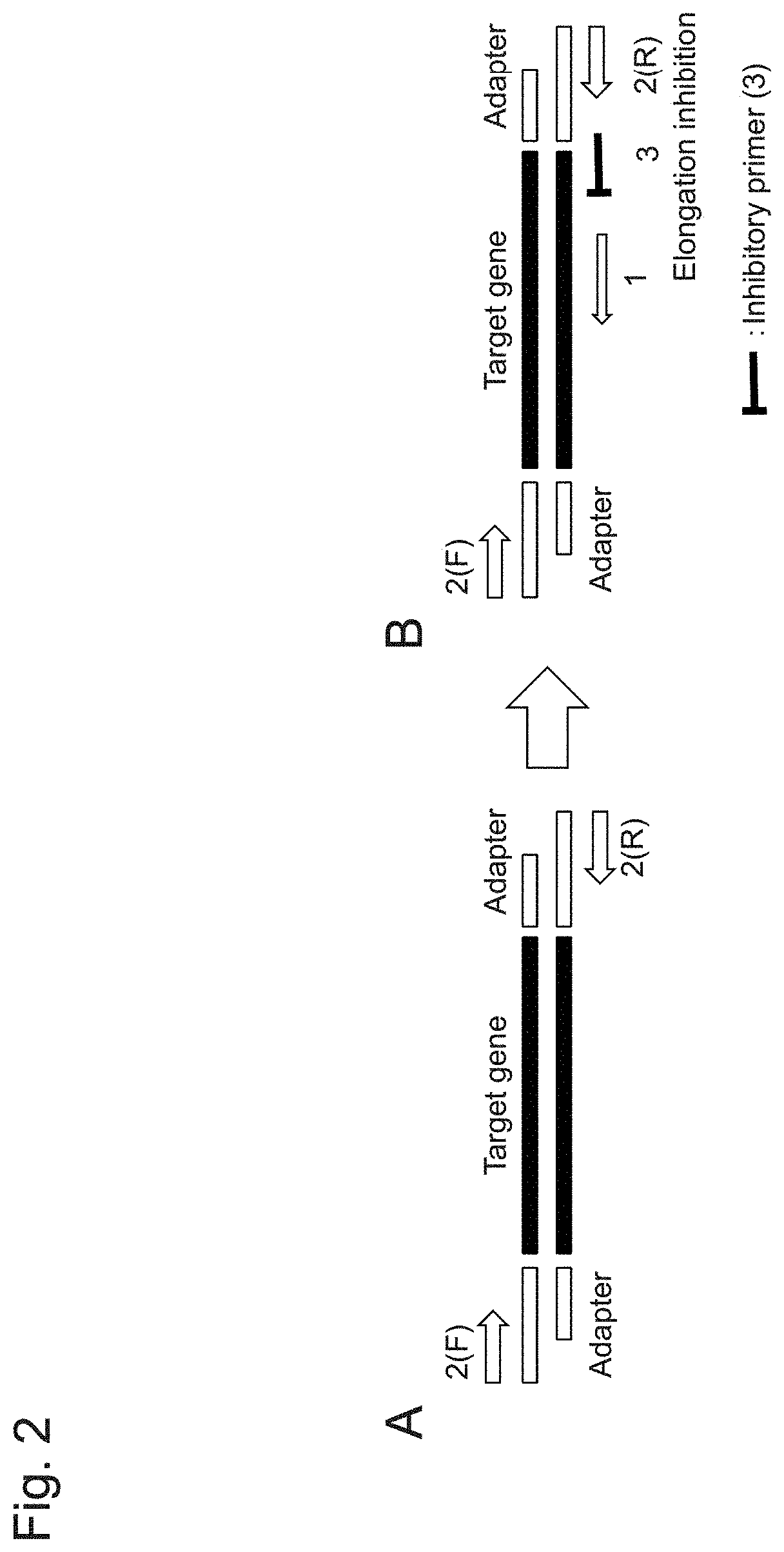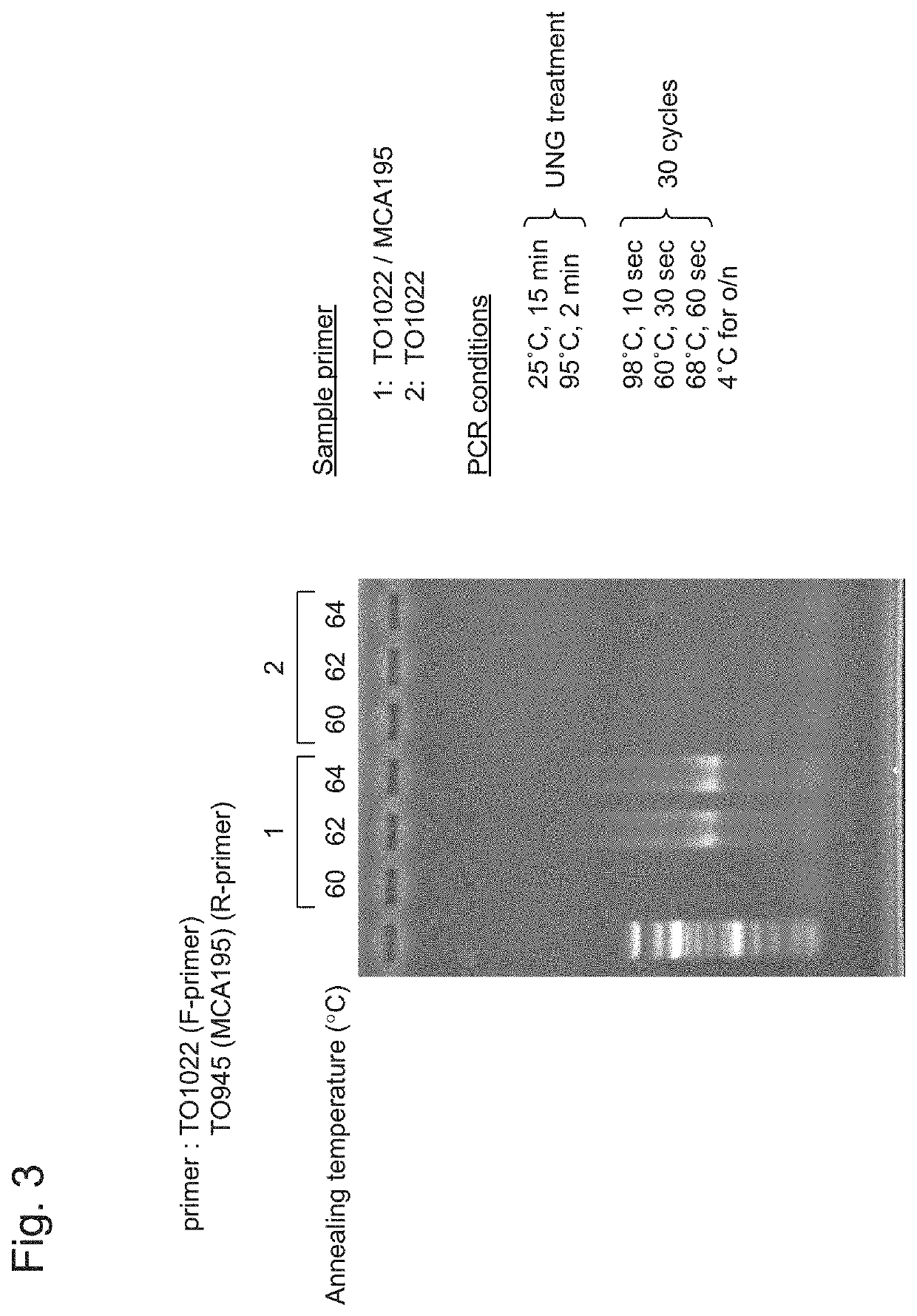Gene-specific unbiased amplification method
a technology of amplification and target genes, applied in the direction of dna/rna fragmentation, microorganism testing/measurement, biochemistry apparatus and processes, etc., can solve the problem of inability to achieve 100% certainty the treatment of restriction enzymes, and achieve the effect of superior to the conventional ligation of adapter genes and superior to any available method
- Summary
- Abstract
- Description
- Claims
- Application Information
AI Technical Summary
Benefits of technology
Problems solved by technology
Method used
Image
Examples
example 1
Gene-Specific Unbiased Amplification Method Using Adapter
1. cDNA Synthesis from RNA
[0088]Total RNA (up to 10 μg) was prepared from mouse spleen cells, and first strand synthesis was conducted using an oligo dT primer (TO903) having the following sequence.
[0089]
Oligo dT primerTO903 oligo (dT) Not1:(SEQ ID NO: 1)5′-ataagaatgcggccgctaaactatttttttttttttttttt-3′
[0090]Reagents used herein are described below.
[0091]Total RNA (up to 10 μg), 10 mM dNTP (Invitrogen (trademark)), 50 μM oligo dT primer (TO903), 5× first strand buffer (Invitrogen (trademark)), 0.1 M DTT (Invitrogen (trademark)), RNase out (Invitrogen (trademark), 200 units / μl SuperScript III (Invitrogen (trademark))
[0092]These were mixed, and a synthesis reaction was conducted at 50° C. for 60 minutes.
[0093]Next, second strand synthesis was conducted. The following reagents were mixed with the above synthesis product, and a synthesis reaction was conducted at 16° C. for 120 minutes.
5× 2nd strand buffer (Invitrogen (trademark)), ...
example 2
Adapter Sequence Examination
[0110]The adapter sequence used in the amplification method in 1 above was examined.
[0111]Mouse TCR α chain cDNA (VA18-1) was used as DNA.
[0112]An adapter was designed, provided that the base length of a sense strand and that of an antisense strand were the same, the base length was 25 bp or 45 bp, and uracil appeared every 5 bases, 10 bases, or 20 bases.
[0113]The sense strand and antisense strand sequences of the adapter used are shown below.
[0114]
25-bp adapterOriginal sense strand before insertion of uracil(GC content: 50%)(SEQ ID NO: 7)5′-gcatgtacccatacgatgatcacg-3′
[0115]Adapter into which uracil was inserted at 5-bp intervals
[0116]
Adapter GC content: 48%Sense strand (SEQ ID NO: 8)Antisense strand (SEQ ID NO: 9)
[0117]The boxed portion of the sense strand represents the forward primer sequence.
[0118]P denotes binding of a phosphate group, and NH2 denotes binding of an amino group.
[0119]Adapter into which uracil was inserted at 10-bp intervals
[0120]
Adapt...
example 3
Next-Generation Sequence Analysis
[0140]FIG. 5 shows the results of comprehensive TCR analysis carried out using a next-generation sequencer (Roche 454 GS Junior) by the method described above.
[0141]Total RNA was extracted from pancreatic regional lymph nodes of diabetes model mice (NOD mice) and unbiased gene amplification of TCR was carried out by the method described above. The resulting sample was subjected to sequencing using a next-generation sequencer. Frequency of the V strand of each of α and β chains of TCR was analyzed and illustrated.
PUM
| Property | Measurement | Unit |
|---|---|---|
| concentration | aaaaa | aaaaa |
| base length | aaaaa | aaaaa |
| elongation | aaaaa | aaaaa |
Abstract
Description
Claims
Application Information
 Login to View More
Login to View More - R&D
- Intellectual Property
- Life Sciences
- Materials
- Tech Scout
- Unparalleled Data Quality
- Higher Quality Content
- 60% Fewer Hallucinations
Browse by: Latest US Patents, China's latest patents, Technical Efficacy Thesaurus, Application Domain, Technology Topic, Popular Technical Reports.
© 2025 PatSnap. All rights reserved.Legal|Privacy policy|Modern Slavery Act Transparency Statement|Sitemap|About US| Contact US: help@patsnap.com



